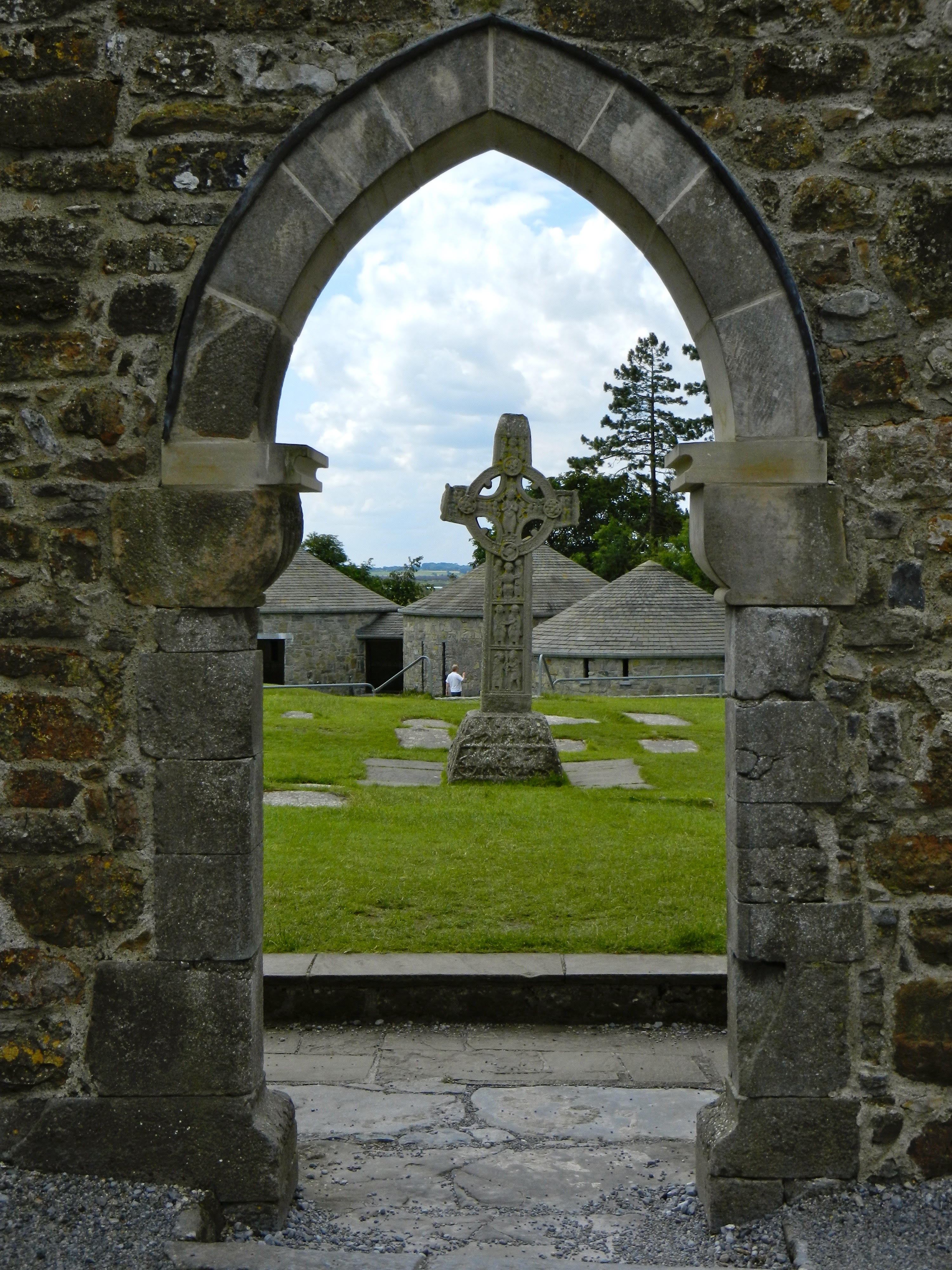Boundaries Revisited: High Crosses as Liminal Markers and Protective Monuments in Early Medieval Ireland

“Cross of the Scriptures,” early 10th century, sandstone, 3.9m high, 1.45m at widest, Clonmacnoise, Co. Offaly. Photo credit: Caitlin Hutchison
Wednesday 19 January 2022, 4.00PM
Speaker(s): Caitlin Hutchison (visiting Fulbright Scholar, York)
Abstract
Throughout the many years dedicated to the formal study of the Irish high cross, scholars have interpreted several functions from the type’s characteristic circumscribed cross form and vast array of imagery derived from early Christian and contemporary early medieval sources. Although the type’s complex representation of theological truths and liturgical rites are now usually acknowledged, there is also substantial evidence supporting the monument type’s commonly mentioned, yet only sporadically explored capability as a boundary-marker. Within the historical context of early medieval Ireland, a high cross could potentially mark and lend protection to a variety of liminal spaces from singular thresholds to the boundaries of entire monastic settlements (termon) or regions. This paper explores relevant textual passages from legal texts, historical records, and hagiographies in support of the monument-type serving as an apotropaic marker of liminal spaces. It then builds upon these considerations by assembling select instances of iconography and epigraphy featured on high crosses to further suggest the type’s role in the demarcation, control, and protection. Through its form, iconographic programme, and placement, the high cross communicated different layers of precautions that invoked the aegis of God, local saints and holy-figures, and high-kings to provide safety at borders, as well as for the spaces and peoples enclosed within these limits.
Location: Virtual event; to participate please register at the link above
Email: history-of-art@york.ac.uk
